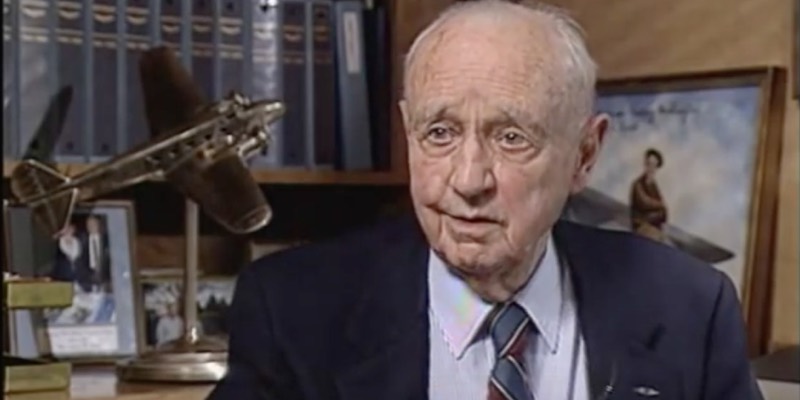Heroes in Flight: Elrey Jeppesen

Image: Youtube.com
Elrey Jeppesen
How much do you know about Elrey Jeppesen? If the answer is, “Not much!”, this man has probably saved your life!
Elrey Burge “Jepp” Jeppesen – aka the Pilots’ Friend – was born in Louisiana on 28 January 1907. He grew up in Hood River, Oregon, and developed his fascination with flying as a young boy. Jeppesen used to climb trees and watched for hours as eagles soared above him – so it was no surprise he made his first solo flight aged 16!
Well and truly hit by the ‘flying bug’, Jeppesen needed his own plane. Ever the entrepreneur, he borrowed $500 from customers on his paper route to buy a wartime Curtiss JN-4 biplane, known as a ‘Jenny’, before later buying an Eaglerock. His heart set on his future, Jeppesen dropped out of high school and joined Tex Rankin’s Flying Circus, traveling the country and delighting onlookers with his flamboyant tricks. He’d even take some of them up with him, charging $10 or $20 a time!
Battling with poor navigation
While Jeppesen was barnstorming, he was presented with an opportunity to work for Fairfield Aerial Surveys, who wanted him to photograph the Mississippi Delta area surrounding New Orleans. This sowed the seed of his later work which would change the aviation world.
In 1930, he joined the Boeing Air Transport Company as an airmail pilot. Jeppesen took on the night runs for double pay – a dangerous job with the limited navigational tools available. In fact, the skies were so dark and empty, sometimes the only other aircraft he saw was the other night run flying with the mail in the opposite direction!
Jeppesen’s experiences at Fairfield and Boeing led to a brainwave: he wanted to improve navigational systems for pilots just like himself. In the winter of 1930 alone, four of Boeing’s 20 pilots were killed after getting lost, prompting Jeppesen to take action.
The start of the Jeppesen Airway Manuals
Jeppesen began by buying a notebook, in which he jotted down details of all the landmarks on every flight he took. Watertowers, smokestacks, airports, field lengths – Jeppesen noted them all to build a detailed picture of everything a pilot could expect. He even added telephone numbers of farmers who could assist with weather information!
What began as records for himself were soon noticed by other aviators. It became known as Jeppesen’s “Little Black Book” and started to gain a following. So, in 1934, Jeppesen borrowed $450 to set up a business in Cheyenne, where he published his first Airway Manuals. They were so popular, the first fifty copies, priced at $10, sold out immediately – despite the Great Depression!
Jeppesen spent the next two decades building his charting business, all the while working for United Airlines as a transport pilot. His work was particularly valuable during WWII, when his manuals were used by the Army.
By 1961, when he sold his company – Jeppesen Sanderson Inc. – Jeppesen employed 200 people at his purpose-built headquarters in Denver, Colorado. Ten years later, he was awarded the Service Award by the FAA for his contributions to safety in aviation.
Jeppesen’s legacy
Jeppesen passed away in 1996, aged 89. The aircraft we fly today may be fitted with more advanced navigational equipment, but his relevance still lives on. Most airlines in the world, as well as the majority of private pilots, still use Jeppesen charts to assist with enroute planning and approach procedures. So, even decades later, Elrey Jeppesen is still keeping us safe in the air!
Are you ready to learn to fly? There’s never been a better time to learn, so get in touch today!
